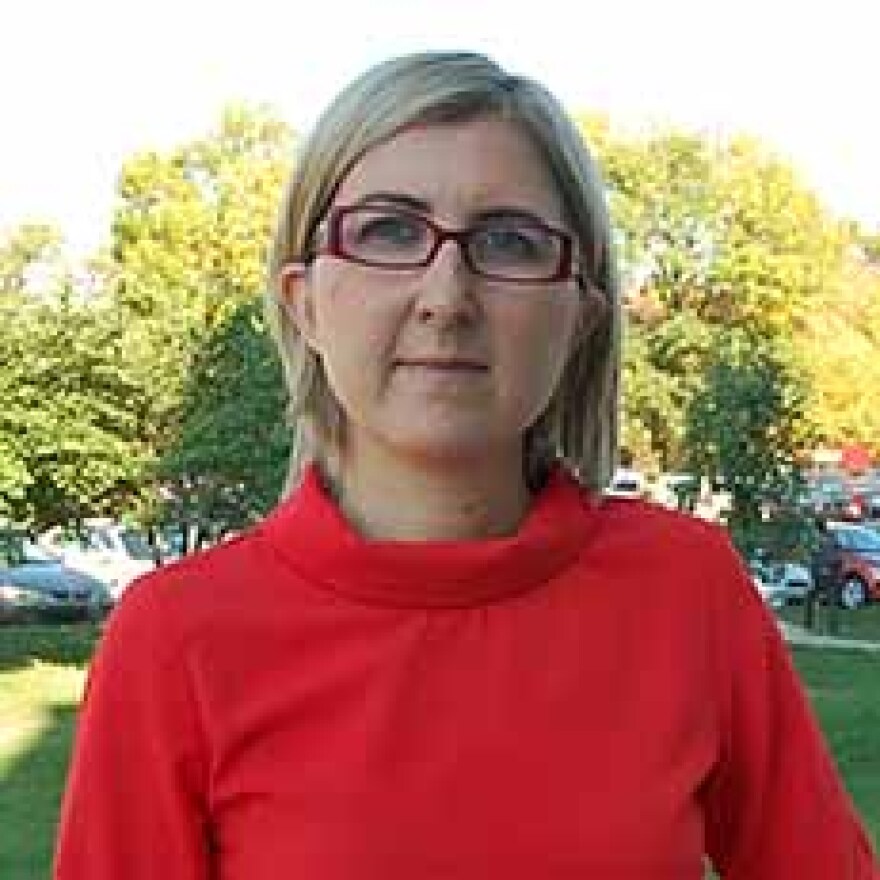When it rains in Chicago or Cleveland, chemicals fall with the raindrops.
That makes sense, said Marta Venier, an Indiana University environmental chemist who leads the Integrated Atmospheric Deposition Network (IADN).

“In general, for most of the chemicals, chemicals are where people live,” she told a group at the Institute for Journalism and Natural Resources.
But when it rains in Eagle Harbor, a remote village at the northernmost tip of the Upper Peninsula, the water isn’t pure, either.
“You can actually say it’s raining PFAS at this point,” Venier said.
Venier’s team found notable concentrations of PFAS in rainwater not only at sampling sites in industrial cities like Chicago or Cleveland, but in Eagle Harbor, as well.
In fact, chemical particles moving through the sky are more important than those moving through water on the ground, Venier said.
“Atmospheric transport is the most important pathway of chemicals getting into the lake,” she said.
Eagle Harbor is nowhere close to major manufacturing plants, where most atmospheric PFAS originates. But distance often isn’t an obstacle for the compounds.
“They can travel long distances. They’ve been measured in polar bears and in the Arctic, in regions where they shouldn’t be there,” Venier said.
Once PFAS compounds make it to far-flung places, they’re likely to stay in the waters, the wildlife, and perhaps the people there.
It takes thousands of years for the chemicals to break down.
“We are going to be dealing with PFAS for a very long time, which is good for chemists. It will keep us busy,” Venier said. “But it’s not necessarily good for the environment, because these chemicals are very persistent.”

In some places, airborne PFAS can reach levels that pose serious health concerns.
Mike Abraczinskas, the director of the North Carolina Division of Air Quality, knows that well.

He spoke at a pre-COVID conference in Madison last year.
“That’s one of the reasons why I’m here today and sharing our story that what you might think is solely a water issue may not be solely a water issue,” Abraczinskas said.
By collecting rainwater, Abraczinskas’ department found PFAS spikes in the air near a chemical plant operated by Chemours, a DuPont spin-off.
That discovery led to $12 million in fines for Chemours. The company also agreed to provide house filtration, reverse osmosis, or other water purification for consumers in the area.
That survey was a precursor to the Great Lakes study.
“We’re not aware that anyone else in the United States did what we did in terms of PFAS compounds,” said Abraczinskas. “I think we were the first to do that in the U.S.”

We know that Chemours plant in North Carolina was one of hundreds of PFAS-emitting facilities in the country.
But the number could be far higher.
In July, the nonprofit Environmental Working Group (EWG) identified 30,000 industrial and municipal sites across the country that are suspected of using, producing, or emitting PFAS.

Further analysis of government data has swollen the total number to nearly 42,000. The sites are shown on this interactive map.
“I think this is, in some ways, a reflection of our expanding knowledge of just how widespread the use of these chemicals are, throughout society, throughout industry, and the vast number of potential sources of contamination,” said EWG senior scientist David Andrews.
Andrews says governments have been too slow to regulate PFAS use.
Indeed, neither the United States nor the state of Wisconsin has enforceable PFAS standards on the books, although the regulatory process is grinding slowly toward their creation.
“Public health protection always seems to be decades behind the science,” Andrews said. “This is a place where the public health concerns [that] the academic research is showing how toxic these chemicals are really makes it apparent the need to act now.”
Taking action to limit PFAS in the environment could make the rain a little less toxic in places like Chicago or Cleveland.
Perhaps, it could reduce the chemicals still coming down in far-flung places like Eagle Harbor, Michigan, too.
“What we do know is that these are contaminants that shouldn’t be in our environment. They shouldn’t be in our body,” Andrews said. “The important first step is just kind of to end this unnecessary use, this unnecessary release to the environment.”





